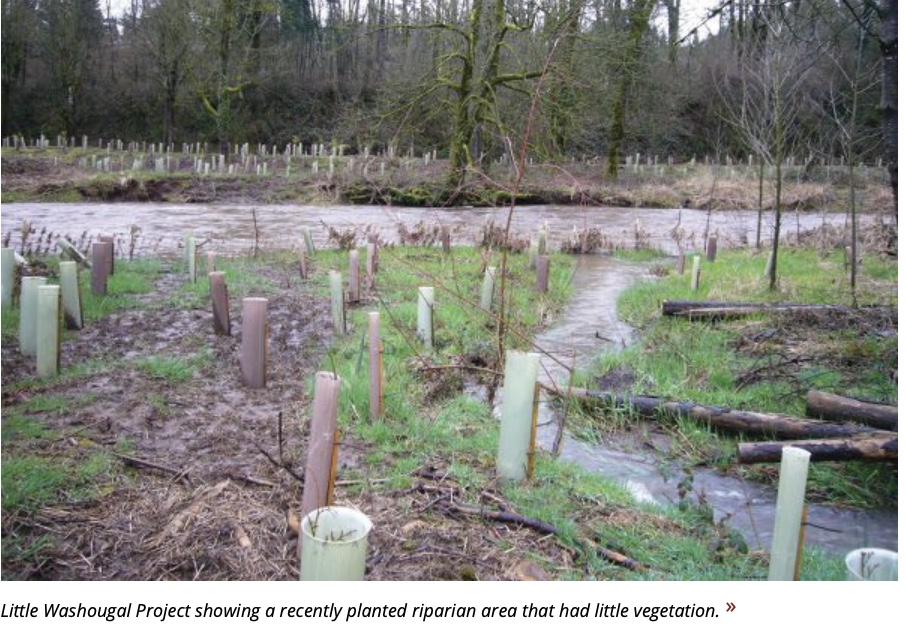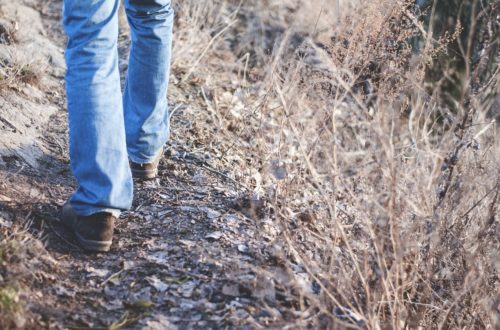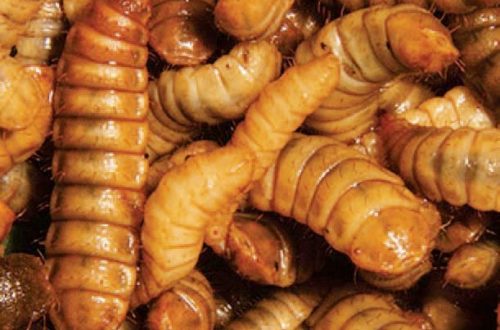The Pacific Northwest is known for its water—whether falling from the sky, melting from high peaks, or flowing towards the ocean—we have such a seeming abundance that it’s easy to take for granted. But, when was the last time you gave a second thought to the wonders of the hydrologic cycle or reflected on the unique role of the riparian plants that are specially adapted to live close to water? If you aren’t familiar with the term, “riparian” refers to the area of vegetation surrounding waterways (ponds, lakes, streams, rivers, etc.). The plant communities occurring at this land-water interface are incredibly biodiverse when healthy, and they provide many benefits to animals from humans to salmon to songbirds.
Human activities that alter riparian areas can cause ripple effects through the entire hydrologic cycle and lead to increased erosion, poor water quality, greater flooding, and loss of habitat for salmon and other fish. Examples of harmful actions humans may take include removing native trees and shrubs to create a lawn-like shoreline, overusing pesticides and fertilizers, and increasing impervious surfaces through development. As a society, we appreciate living and recreating near water and, consequently, roads and other hard surfaces have increased over time while the vegetative land cover has decreased. Imagine the difference if you poured a bucket of water on your driveway versus on the forest floor, and you can easily understand how surface conditions affect the flow and quality of water. Riparian areas with an abundance of native plants are capable of filtering pollutants from the water as it makes its way, above or below ground, through the watershed.
When water travels across pavement, rooftops, or barren ground, it will pick up sediment and/or stormwater, both of which can harm water quality and cause problems for sensitive species such as salmon.
Without adequate riparian vegetation, there is less cover to shade water and keep streams cooler, and less organic matter to provide nutrients throughout the food web.
Vegetation also helps dissipate water’s energy; fewer plants mean fewer rough surfaces to slow water velocity, which can result in more severe flooding, increased erosion and sedimentation, property loss or damage, and fewer slow-water refugia that benefit native fish. Turfgrass alone won’t stabilize streambanks because the root systems are too shallow, but many native riparian species like red osier dogwood, Western red cedar, Oregon ash, Douglas spirea, and Pacific ninebark (to name a few!) are lovely, low maintenance, and ecologically friendly.
You can find these plants at many nurseries throughout the greater Portland-Vancouver area. Just do an internet search for native plant nurseries or, if you’re in southwest Washington, you can reach out to groups like Lower Columbia Fish Enhancement Group, the Watershed Alliance, or Clark Conservation District for advice and assistance.
To work with nature and its amazing hydrologic cycle, we should strive to create opportunities to naturally help slow the movement of water (to be clear, structures such as dams can slow water too much!), especially lower in our watersheds where humans have the greatest impact. While natural waterways are sometimes fast and furious—think snowmelt cascading down a mountain stream—much of the time slow and steady is the Way of Water, whether it’s gently percolating through the forest floor to recharge groundwater or being taken up through the roots of a tree and released through evapotranspiration and eventually cycling back through the system.
Healthy riparian areas along Bluebird Creek in Skamania County, Washington.
Many of the changes humans make as we develop and urbanize our watersheds lead to faster flow and less filtration, and the results can vary from bank erosion to catastrophic flooding. Add the impacts of climate change to this mix, and sadly, we are going to experience the consequences of poor riparian stewardship in increasingly costly ways.
We reap what we sow, as they say, and with a few simple actions, we can all protect our waterways and the life that depends on them. To protect riparian areas in their natural state, plant native trees and shrubs (even if you don’t live near water, you can still landscape with native plants or volunteer at a local planting event), use lawn/ garden chemicals sparingly, maintain vehicles to avoid leaks that could eventually end up in waterways, keep home septic systems well maintained, and use water efficiently to keep as much of it as possible in the natural water cycle and available to fish and wildlife. If you can do nothing else, just plant a tree! Shauna Hanisch-Kirkbride
Shauna Hanisch-Kirkbride
Shauna Hanisch-Kirkbride is the Managing Director of Lower Columbia Fish Enhancement Group, a nonprofit that restores habitat to benefit salmon, steelhead, and other species. She lives in Vancouver, Washington, and not only promotes native plant restoration at work but has been engaged in backyard restoration on her one-third acre suburban plot for the past few years.






